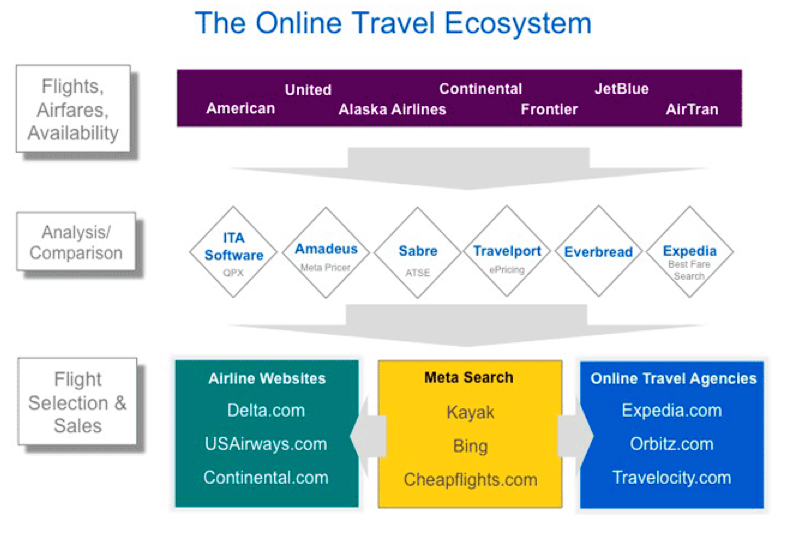A BIG WEEK – You Can Do Nothing Alone (GET IT!)
Impact – by teaming up with MONSTER BRAINS.
– seems to be what really trickers me. And I cant really go into detail on the busines impact that I feel I have been a part of over the last 12 months. But Google was so kind (99% or anti trust reasons) to
Remember: I was bankrupt – I had no clue what would happen to my house (where the kids lived with their mother) – I had no control of my portfolio / AND THE WORLD WAS HIT BY THE BIGGEST FINANCIAL CRISIS POST WAR…
It was not really until Friday I understood how much (read on)
Impact EVERBREAD already has
Here is notes from our internal daily newletter (and yes that the level of profesionalism we strive for at EVERBREAD) when Google bought our competitor ITA for 700mioUSD – and chose to mention EVERBREAD IN ALL SLIDES
BIG G BUYS ITA
The entire industry is buzzing about it. After quite some time evaluating the product, Google closed the deal at $700 million, buying out air travel search tech provide ITA Software. The team (500) as well as QPX will be in the hands of the Mountain View search giant, but timing on when exactly that will go live to consumers was not confirmed by Google’s CEO Eric Schmidt. According to Schmidt and Marissa Mayer, Google will try to provide flight information in innovative way and refer travelers to websites where they can complete the booking, but overall, the two Google execs deferred questions on future developments. In that case, Kayak should be a bit worried (as a horde of article already mention that), as well as Bing (Wired’s magazine is priceless – Google Dings Bing….) and Expedia, Orbitz and quite a few of the rest big boys right there.
The FTC and the Justice Department will be looking into the deal to ensure there is enough competition out there. Also, something that you might have not read yet in the crazy article storm – apparently, ITA’s revenue is not enough to require European Commission involvement, which is definitely a good sign for the deal to come through.
Some interesting pieces:
Webcast: http://bit.ly/aiC4ol
Press Release ITA: http://bit.ly/bjDbRo
Press Release Google: http://investor.google.com/releases/2010/0701.html
Tnooz: http://bit.ly/b8kSpl
Search Engine Land (a very, very good piece): http://selnd.com/akyv6o
Simply very hard to understand from a time persepctive (11months) – but obvious when you see your product live…!
At the same time Trade-Shift Happens
Again – I was contacted by people with drive, brains and experiences that is BEYOND NORMAL. And we have been working like mad ants to get our visionlive – here is a guest post from co-founder Christian Lanng (and yes – I have taken the chairman seat after ending bankruptcy).
Inside the hype machine
Tradeshift has officially existed for 9 months and 4 days and it’s still
hard to understand how far we have come. I keep being reminded whats
possible with the right team, and timing. But had I not met Morten exactly
a year ago and had he not been bankrupt, we would probably never have
developed the idea that became Tradeshift, we would not have had the
focus or time needed.
The idea is really pretty simple, that all business should be able to connect
and trade as simply as people connected on Facebook. To which the
most common reaction have been, are you sure that have not been done
before? And the simple answer is: no – for many reasons.
That does not mean Tradeshift was created overnight (no such thing as
overnight successes exist. We spend the last 5 years before Tradeshift
creating the worlds first p2p business infrastructure in Denmark, and
after that participated in global standardization of the e-business field, so
we had a lot of knowledge with us to begin with, but together with that
knowledge a lot of frustration.
Most solutions in the market, was expensive, poorly designed and typically
only worked with one big partner at the time. So Tradeshift represents our
bet, at a solution to the problem of connecting business online, but this
does not mean we think it is perfect, far from.
@Hartvig Hit the nail spot-on, when he criticized the beta product we
launched in May in Denmark (in Danish: http://hartvig.com/2010/5/19/
tradeshift_%E2%80%93_symbolet_pa_det_lave_danske_bundniveau.as
px) – we had been so focused on getting the fundamentals right (simple,
free, global), that we missed a few points:
• Product / Market fit might differ substantially in your launch market
and target markets
• If your product is hyped it can NEVER live up to the hype, people will
be disappointed get used to the idea
• Don’t be afraid to show the world where you are going, stealth is for
cowards (ML: COWarD$!)
Product / Market fit:
All start-up theory talks about reaching the mythical product / market fit.
And as a start-up you are soon faced with a dilemma, should you design
your solution for your home market or should you aim your ideal market
from the beginning. In the end it’s a matter of logistics and cash. In our
case we choose to go for the big play right out of the box, building a truly
global product for small business invoicing, but we chose to launch it in our
home market first.
• Only 50% of the 20M small business in Europa have an accounting
package or use an accounting package in their business, these
where our starting point (they have no fixed idea how business
software should be and are therefore a good starting point for
disruption)
• Make sure you get localization right, test, test and test some more.
NO translation agency or copywriter can get it completely right, in
the end rely on your users to give you the right feedback (we learned
this the hard way).
• When we launched in Denmark, we launched in a market hugely
different from most of our target markets, more than 70% of the
companies have accounting software, and they expect all invoicing
solutions to work with this out of the box, so instead of disrupting we
immediately felt the pressure to conform to the existing solutions.
In the end this taught us some extremely valuable lessons, and after
the initial backlash we saw that the product had a completely different
reception in Germany and UK, where most small business don’t have
accounting software. Luckily we did not panic and over focused on the
Danish feedback, but we where left with some depressed supporters.
The hype machine
Working closely with Morten Lund, you realize that he is a marketing
monster early on, I don’t know if many others in Europe could have pulled
off landing some of the interviews we got early on, in Wired, Techcrunch,
etc. what most people don’t know, is he is able to do this, because he
has a no-bullshit attitude to reporters and journalists and they like that,
and in the end it always comes down to the content, not who made the
introduction.
The dark-side of the hype machine is also very obvious, we where
stunned to see the tweets and some of the news being circulated about
what Tradeshift was and could do (basically we would disrupt the worlds
financial system single-handedly, while creating peace in the middle-east).
As the hype grew you suddenly got caught in a catch22, improve on your
product, so it can live up the hype or release early, and risk disappointing a
lot of people. In the end we took the tough decision to release what we felt
was a very early version of the product.
Today we are very happy we did this, some of the feedback we have
gotten in the last few months have really changed the direction and priority
we have given to a lot of features. Instead of sitting in “stealth” mode
imagining what the world would want from Tradeshift (Did anybody say
Duke Nuke’m Forever?). But we don’t forget the cost, we disapointed a lot
of people, and ironically instead of just shrugging it off, this is one of the
things that drive us today, and our development effort – we want to make
sure that we can deliver on the initial promises (maybe not peace in the
middle-east).
Don’t be afraid
That leads me to the last part, today there is all to often a sort of secrecy
culture around start-up projects, people are afraid of getting whole ideas or
concepts ripped of, in the early days it made a lot of sense, when products
where basically “mail on the web” and it was all about getting that critical
mass first.
As a start-up there is no such thing as getting your ideas spread too early,
and even though we have some very advanced magic going on on the
inside of Tradeshift, I always know that it can get ripped off in 6 months by
the right team, but I’m not afraid since i know how much further we will be
in those 6 months, and furthermore I know we have the vision, the idea of
where we are going, and they do not or else they would be there by now.
Thats also why we put our roadmap (link: http://tradeshift.zendesk.com/
entries/195589-the-next-3-months-of-tradeshift) , out open on the internet
for the next 3 months for everybody to see, that means my competition
can see it too, but in the end they can’t win just by copying what we will do
next, they have to understand why we do it and that takes the vision.
All in all, I’m extremely proud of where we are today, but I still feel we have
a lot of promises to fulfill, that’s what makes the next 9 months and 4 days
so exiting.
/Christian Lanng
Stuff I think you should think (deeplyabout)
TELL IT LIKE IT IS: Ohh finaly someone a Microsoft woke up at gave us a sign that the shark still has teeth – some dude in Cooperate Communication – Frank X. Shaw – did a blogpost that I love (and look at 30min a day). Its outlining how small everyone else is compared to Microsoft (and for startups is scary!! but also a great inspiration) / read here
YOU CAN DO IT: Another very interesting thing is the power of formerly young men – who are now grownups and have a LOT of power in the tech industry. EVERBREAD (announcing big thing within the next 4h) – would NEVER have been where we are if it wasn’t for a post potsmoking surfer called Michael Arrington and his UK work monster Mike B. AND The NYC scene is now booming thanx to many things – not the least Mr Calacanis and C Dixon – who apparently never sleeps. My conclusion: YOU CAN DO IT!!





